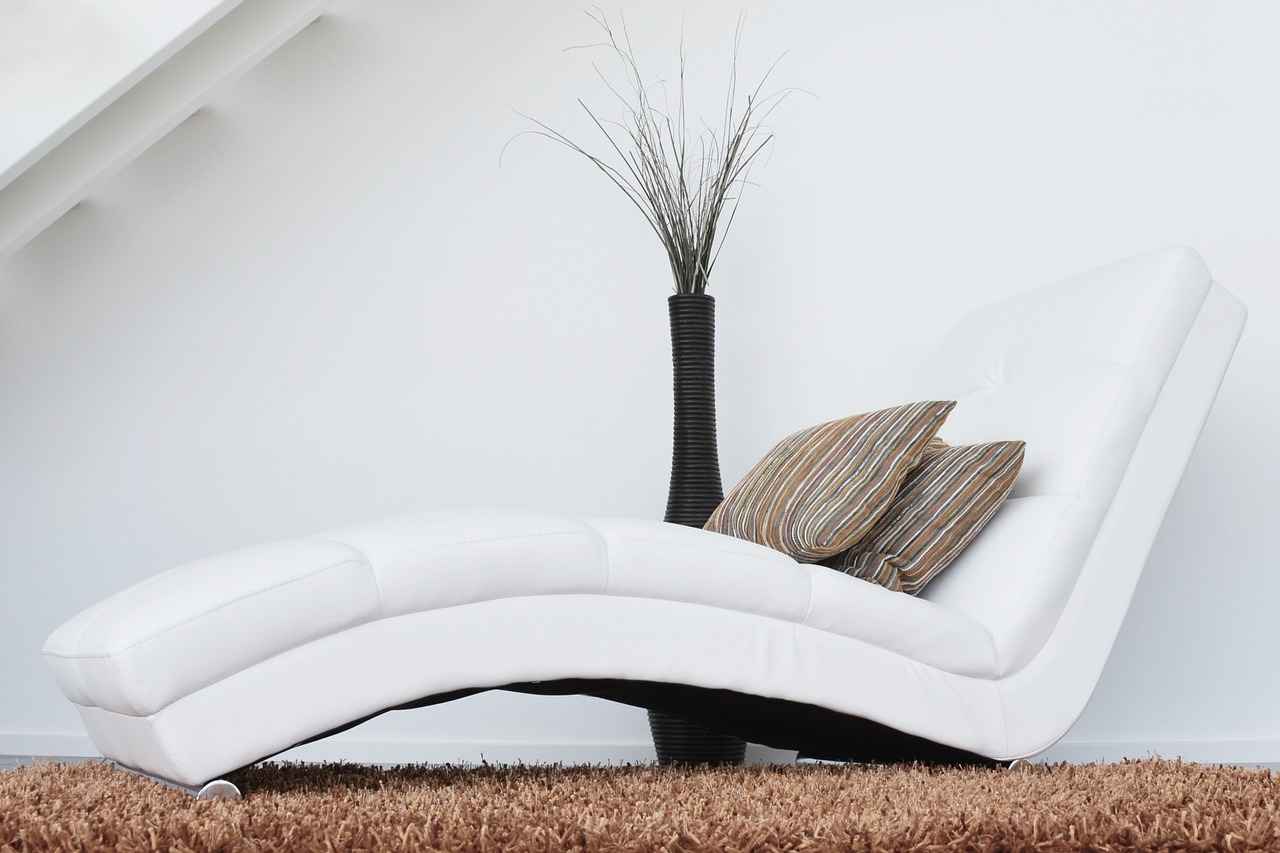Creating a stylish and functional industrial-style room divider for your loft space can transform your living area, offering both privacy and aesthetic appeal. This article will guide you through the process of designing and building your own divider, ensuring it fits seamlessly into your home while reflecting your personal style.
An industrial-style room divider typically combines raw materials such as metal, wood, and glass, creating a rugged yet modern look. These dividers are characterized by their minimalistic design and functionality, making them a popular choice for loft spaces that often feature open layouts.
Loft spaces are known for their open designs, which can sometimes feel overwhelming. A room divider not only enhances privacy but also helps in defining different areas for various activities, such as work, relaxation, or dining. By incorporating a room divider, you can create a more cozy and functional environment without compromising on style.
- Space Management: Effectively utilize your loft space by creating designated areas.
- Aesthetic Appeal: Add a unique design element that enhances the overall look of your home.
- Increased Privacy: Create personal spaces that feel more intimate and separated from communal areas.
There are various styles of industrial room dividers to consider:
- Sliding Barn Doors: Perfect for a rustic industrial look.
- Open Shelving Units: Provide storage while maintaining an open feel.
- Framed Glass Panels: Allow light to flow through while offering separation.
Choosing the right materials is crucial for achieving that authentic industrial vibe. Here are some popular choices:
- Wood: Look for reclaimed wood to add character and warmth.
- Metal: Use steel or iron for a robust and sturdy structure.
- Glass: Incorporate tempered glass for a modern touch that allows light to pass through.
Follow these steps to create your own industrial-style room divider:
Start by sketching your design. Consider the dimensions and how the divider will fit into your space. Think about the function it will serve and the materials you want to use.
Compile a list of tools and materials you will need for the project:
- Tools: Drill, saw, level, measuring tape, and screws.
- Materials: Wood planks, metal brackets, glass panels, and paint or stain.
Once your room divider is constructed, it’s time to add the finishing touches:
Choose a paint or stain that complements your existing decor. Dark stains can enhance the industrial feel, while lighter colors can brighten up the space.
Add personality to your room divider by including shelves for plants, hooks for hanging items, or even artwork. This not only makes the divider functional but also serves as a decorative piece.
In summary, building an industrial-style room divider is a rewarding project that can enhance the functionality and aesthetics of your loft space. With careful planning and creativity, you can create a stunning focal point that serves multiple purposes in your home.
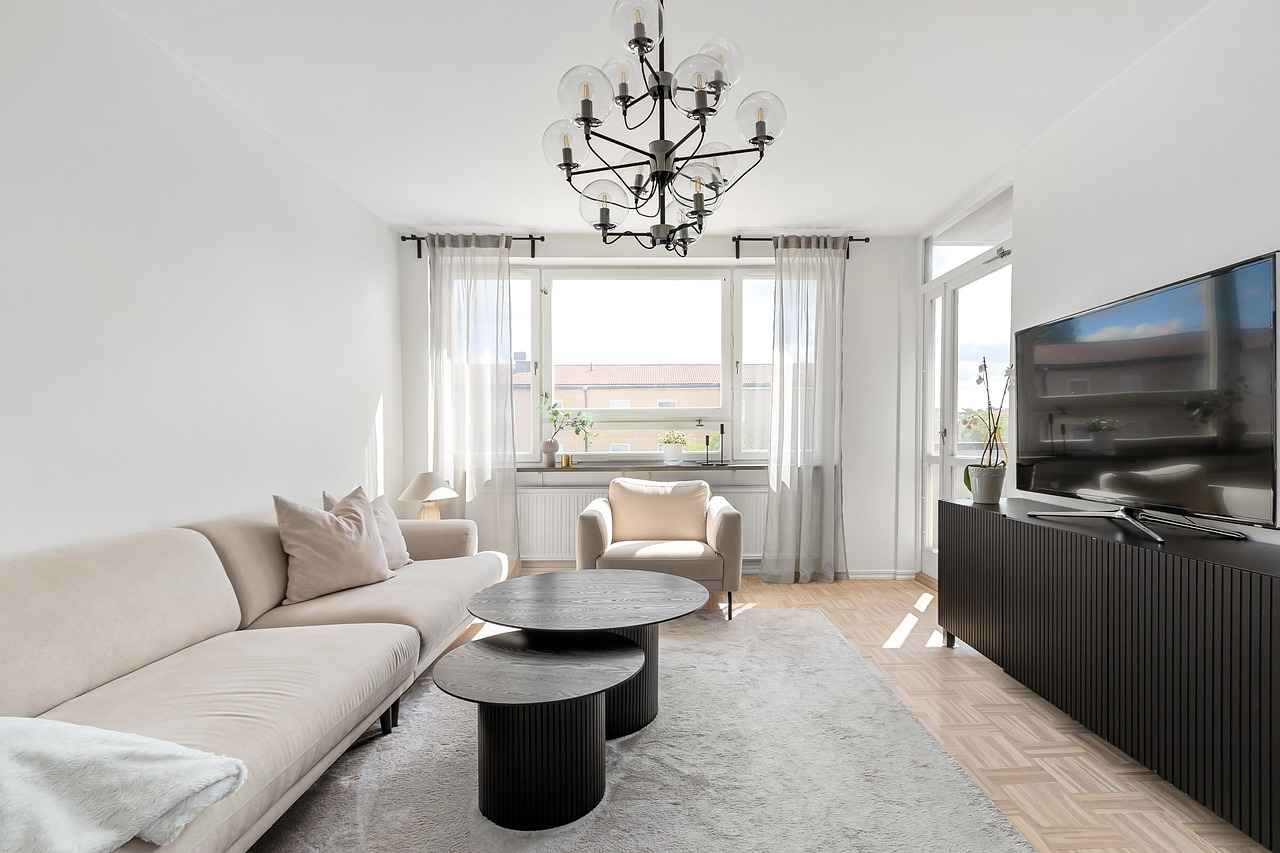
What Is an Industrial-Style Room Divider?
Understanding the characteristics of industrial-style room dividers is essential for appreciating their aesthetic and functional value in modern living spaces. These dividers are not just practical solutions for separating areas; they also embody a unique design philosophy that merges utility with style.
Industrial-style room dividers typically feature a mix of materials such as wood, metal, and glass, reflecting the raw and unfinished look associated with industrial design. This style often draws inspiration from factories and warehouses, characterized by exposed structures and a rugged aesthetic. The use of reclaimed wood and metal frames can create a striking visual contrast, making them a focal point in any room.
One of the primary reasons to choose an industrial-style room divider is its ability to enhance space management. In open floor plans, particularly in lofts, these dividers can create distinct areas for living, working, or entertaining without the need for permanent walls. This flexibility allows residents to adapt their spaces to suit their changing needs. For example, a room divider can transform a corner of a loft into a cozy reading nook or a small office space.
Moreover, industrial-style room dividers can significantly improve privacy in shared living situations. By strategically placing a divider, individuals can enjoy personal space while still being part of the larger environment. This is especially beneficial in homes where multiple people share living areas, providing a sense of separation without completely isolating individuals.
Additionally, these dividers contribute to the overall decorative appeal of a room. A well-designed industrial divider can add character and depth, breaking up monotonous spaces and introducing visual interest. Whether it’s a tall metal frame with wooden slats or a glass panel divider, each design choice can influence the overall ambiance of the loft.
In summary, understanding the characteristics of industrial-style room dividers not only enhances your appreciation for their design but also highlights their versatility and functionality in modern living spaces. From improving privacy to adding aesthetic value, these dividers serve multiple purposes, making them a worthwhile addition to any home.
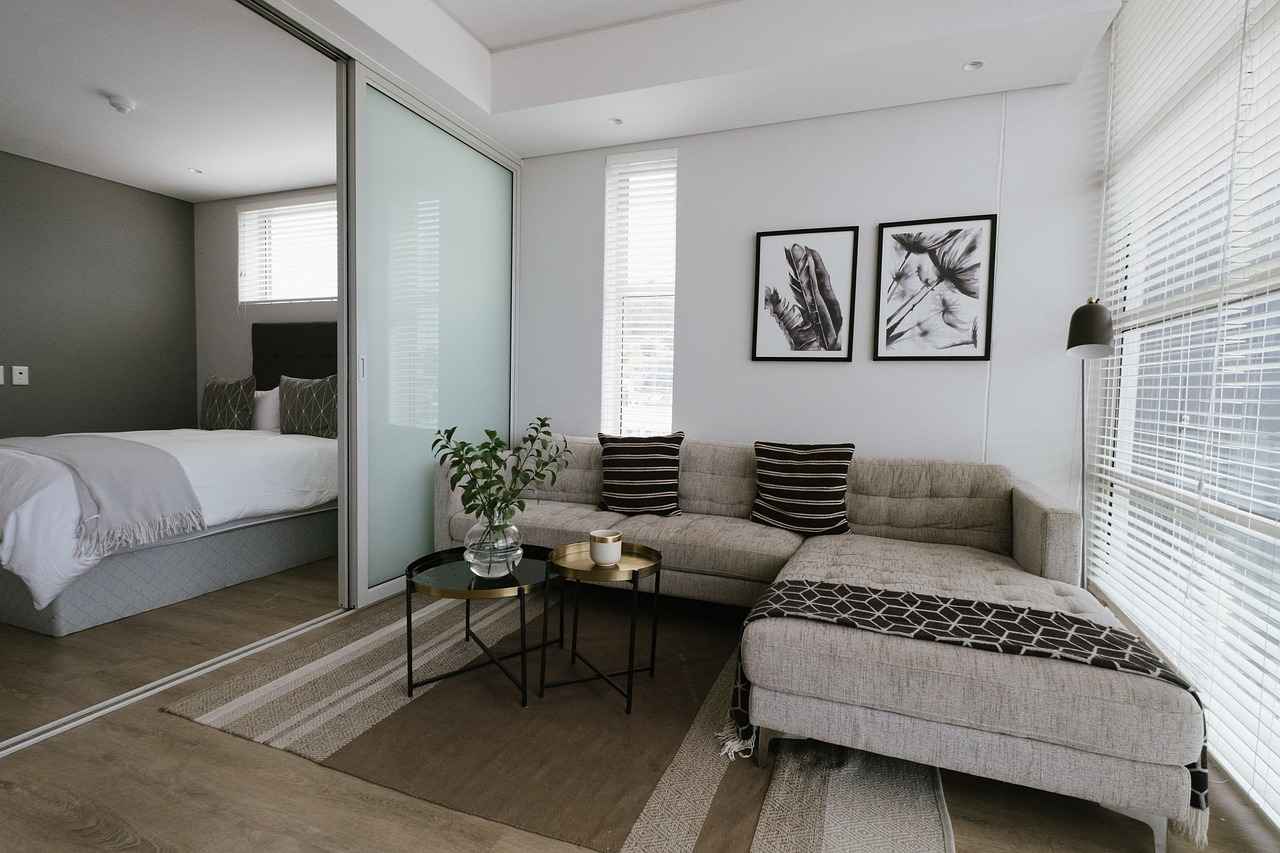
Why Choose a Room Divider for Loft Spaces?
When it comes to designing open loft spaces, the challenge often lies in effectively dividing the area while maintaining a sense of style and functionality. Room dividers emerge as a practical solution, offering a multitude of benefits that cater to both aesthetic and functional needs. In this article, we will delve into the reasons why incorporating a room divider in your loft can transform your living space.
Open loft layouts are celebrated for their spaciousness and modern appeal, but they can sometimes feel overwhelming or lack intimacy. This is where room dividers come into play. They allow you to create distinct areas within your loft, enhancing both privacy and functionality without compromising on style. Here are some compelling reasons to consider:
- Improved Privacy: In shared living situations, privacy is often a concern. Room dividers can effectively separate sleeping areas from living or working spaces, ensuring that each area serves its purpose without distractions.
- Enhanced Functionality: By defining specific zones, room dividers can make your loft more functional. For example, you can create a cozy reading nook or a home office, maximizing the use of your space.
- Aesthetic Appeal: A well-designed room divider can serve as a striking focal point, adding character and visual interest to your loft. With various materials and designs available, you can choose one that complements your existing decor.
- Flexibility: Unlike permanent walls, room dividers offer flexibility. They can be moved or reconfigured as needed, allowing you to adapt your space to changing requirements or preferences.
One of the primary advantages of using room dividers is their ability to create private areas in otherwise open spaces. This is particularly beneficial in lofts where multiple people may share the same living environment. By strategically placing a room divider, you can establish a sense of separation, making it easier to coexist harmoniously.
Beyond functionality, room dividers can significantly enhance the aesthetic of your loft. A thoughtfully designed divider can introduce new textures, colors, and patterns, elevating the overall look of your space. For instance, a rustic wooden divider can add warmth, while a sleek metal design can contribute to a more industrial feel.
When selecting a room divider, consider the various styles available. Industrial-style room dividers often incorporate materials such as wood, metal, and glass, reflecting the raw and unfinished look characteristic of industrial design. Here are some popular options:
- Wood and Metal Combinations: A combination of wood and metal can create a striking contrast, embodying the essence of industrial design.
- Glass Panels: Incorporating glass panels can add an airy feel to your divider, allowing light to flow while maintaining separation between spaces.
When considering a room divider for your loft, it’s essential to plan carefully. Measure your space and determine the best location for the divider to maximize functionality. Additionally, think about the materials you want to use; they should not only align with the industrial aesthetic but also be durable and easy to maintain.
Incorporating a room divider into your loft can significantly enhance your living experience. By providing privacy, improving functionality, and adding visual interest, room dividers are a versatile solution that can transform your open space into a well-defined and stylish environment.
Benefits of Using Room Dividers
When considering the layout of your living space, the choice to incorporate room dividers can significantly transform your environment. These versatile installations not only enhance the aesthetic appeal of your home but also offer practical benefits that cater to modern living needs.
Understanding the advantages of room dividers can help you make informed decisions about your interior design. Here are some compelling reasons to consider:
- Space Management: Room dividers effectively segment open areas, allowing you to create distinct zones for various activities. This is particularly beneficial in loft spaces where the lack of walls can make it challenging to define separate living, working, or sleeping areas.
- Aesthetic Appeal: A well-designed room divider can serve as a striking focal point in your home. By choosing materials and styles that complement your existing décor, you can enhance the overall visual interest of your space.
- Increased Privacy: For those living in shared spaces, room dividers can provide much-needed privacy. They allow for personal areas where individuals can retreat without feeling exposed, making them ideal for home offices or shared bedrooms.
In environments where multiple people share a space, privacy becomes a priority. Room dividers can effectively create secluded areas, allowing individuals to engage in activities without distractions. For instance, if you work from home, a room divider can help establish a dedicated workspace, separating it from your living area. This separation not only enhances focus but also helps to maintain a healthy work-life balance.
Beyond their functional benefits, room dividers can significantly elevate the aesthetic of your home. With an array of design options available—from rustic wooden screens to sleek metal frameworks—there’s a style to suit every taste. Incorporating unique textures and colors can transform an otherwise bland area into a vibrant and engaging space.
Room dividers come in various forms, each offering unique benefits:
- Folding Screens: These are portable and can be easily moved or stored when not in use, making them a flexible option for changing needs.
- Bookshelves: These not only divide space but also provide storage, combining functionality with style.
- Sliding Panels: Ideal for smaller spaces, sliding panels can be opened or closed as needed, allowing for customizable privacy and openness.
When selecting a room divider, consider the following factors:
- Space Requirements: Assess the area where you plan to place the divider. Ensure that it fits well without overwhelming the space.
- Material: Choose materials that align with your style while ensuring durability. Wood, metal, and fabric are popular choices.
- Functionality: Decide whether you need a permanent fixture or a movable option that can adapt to different situations.
In conclusion, the benefits of using room dividers are multifaceted, offering solutions for space management, aesthetic enhancement, and increased privacy. By understanding these advantages, you can make a well-informed decision that aligns with your lifestyle and design preferences.
Enhancing Privacy in Open Spaces
In today’s modern living environments, particularly in loft spaces, the need for privacy has become increasingly important. is not just about creating physical barriers; it also involves designing areas that feel personal and secure. One effective solution to achieve this is by using room dividers.
Room dividers serve as practical tools for establishing distinct areas within an open layout. They can create a sense of separation without the need for permanent walls, which is particularly beneficial in lofts where space may be limited. By incorporating room dividers, you can carve out a private nook for work, relaxation, or personal activities, making shared living situations more comfortable.
In addition to enhancing privacy, room dividers can significantly improve the functionality of a space. For instance, in a shared loft, a divider can help delineate areas for different activities, such as a workspace and a living area. This separation allows individuals to coexist harmoniously while engaging in their respective tasks, ultimately leading to a more organized and efficient environment.
- Fabric Dividers: These are lightweight and versatile, offering various designs and colors to match your decor.
- Wooden Screens: A classic choice that adds warmth and texture to your space, wooden dividers can be customized to fit any aesthetic.
- Metal Frames: For a more industrial look, metal room dividers provide durability and a modern edge, perfect for contemporary lofts.
- Glass Panels: These allow light to pass through while still creating distinct areas, maintaining an open feel in your loft.
When choosing a room divider, consider the overall design theme of your loft. The divider should complement your existing decor while fulfilling its functional purpose. Additionally, think about the height and width of the divider; a taller divider can provide more privacy, while a shorter one may allow light and air to flow freely between spaces.
Integrating room dividers into your loft can be a stylish solution to achieve privacy. For example, placing a divider between a living area and a workspace can create a dedicated environment for productivity. You can also use dividers to define sleeping areas in shared living situations, ensuring that each resident has their own personal space. Furthermore, consider adding decorative elements to your dividers, such as plants or shelves, to enhance their functionality and visual appeal.
In summary, using room dividers is an effective way to enhance privacy in open spaces like lofts. By selecting the right type of divider and thoughtfully incorporating it into your design, you can create a more comfortable and functional living environment. Whether you opt for fabric, wood, metal, or glass, the right room divider can transform your loft into a space that feels both personal and inviting.
Adding Visual Interest
When it comes to designing loft interiors, one often overlooked element is the room divider. A well-designed room divider can serve as a focal point, adding character and depth to otherwise plain loft interiors. This article delves into how you can achieve this with an industrial-style room divider, enhancing both the aesthetics and functionality of your space.
Room dividers are not just practical; they can also be artistic statements. By using unique shapes, materials, and designs, you can create a stunning visual impact. Here are some key aspects to consider:
- Material Choices: Using materials like reclaimed wood, metal, or glass can provide texture and contrast.
- Color Schemes: Choose colors that complement your existing décor to create harmony.
- Design Elements: Incorporating geometric shapes or patterns can add a modern touch.
In open-concept living areas, room dividers can create designated spaces without the need for permanent walls. This versatility allows for:
- Flexible Layouts: Easily rearrange your space as your needs change.
- Defined Areas: Create distinct zones for work, relaxation, or dining.
- Improved Privacy: Maintain a sense of seclusion in shared spaces.
When designing your room divider, consider the following styles that can add visual interest:
- Industrial Chic: Use a combination of wood and metal to achieve an edgy look.
- Minimalist Glass: Incorporate glass panels for a sleek, modern aesthetic.
- Artistic Screens: Opt for decorative screens with intricate designs for a unique touch.
To ensure that your room divider not only looks great but also serves its purpose effectively, keep these tips in mind:
- Measure Your Space: Accurate measurements will help you design a divider that fits perfectly.
- Consider Lighting: Ensure that your divider doesn’t block natural light, especially if you’re using opaque materials.
- Incorporate Functionality: Think about adding shelves or hooks for added utility.
In conclusion, a room divider is more than just a partition; it is an opportunity to express your style and enhance the functionality of your loft. By choosing the right materials and design elements, you can create a stunning focal point that not only adds visual interest but also improves the overall flow of your space. Whether you opt for an industrial-style divider or something more eclectic, the key is to ensure it aligns with your personal aesthetic while serving practical needs.
Types of Industrial-Style Room Dividers
When it comes to designing your loft space, understanding the various types of industrial-style room dividers can significantly influence your design decisions. These dividers not only enhance the visual appeal of your home but also provide functional benefits that can transform open spaces into cozy, defined areas.
Industrial-style room dividers come in a variety of designs, each offering unique characteristics that contribute to the overall aesthetic of your loft. Here are some popular types:
- Sliding Barn Doors: These dividers add a rustic touch while maintaining an industrial feel. They are ideal for creating flexible spaces that can be opened or closed as needed.
- Metal Grills: Featuring a minimalist design, metal grills can serve as both a room divider and a decorative element. They allow light to pass through while still providing a sense of separation.
- Wood and Metal Frames: Combining wood and metal, these dividers offer a striking contrast that epitomizes industrial design. They can be customized to fit various styles and sizes.
- Glass Panels: For a more modern touch, glass panels can be incorporated into your room divider. They provide a sense of openness while still defining spaces.
Selecting the right type of room divider involves considering both functionality and style. Here are some factors to keep in mind:
- Space Requirements: Assess the size of your loft and determine how much space you want to divide. Some dividers are better suited for large areas, while others work well in smaller spaces.
- Light Flow: If maintaining natural light is a priority, consider options like glass panels or metal grills that allow light to filter through.
- Design Aesthetic: Ensure that the room divider aligns with your overall design theme. Whether you prefer a rustic, modern, or eclectic look, there’s a divider that can complement your style.
The materials you choose play a crucial role in achieving the desired industrial look. Here are some popular options:
- Reclaimed Wood: This sustainable choice adds warmth and character to your space, making it an excellent option for a rustic industrial vibe.
- Steel and Iron: These materials are synonymous with industrial design, offering durability and a sleek appearance.
- Glass: As mentioned earlier, glass can create a modern feel while maintaining separation between spaces.
By understanding the different types of industrial-style room dividers available, you can make informed decisions that enhance the functionality and aesthetic of your loft. Whether you opt for sliding barn doors or a sleek metal grill, the right divider can transform your space into a stylish and practical living area.

Materials for Your DIY Project
When embarking on a DIY project for an industrial-style room divider, the choice of materials plays a pivotal role in achieving both aesthetic appeal and functionality. The right materials not only contribute to the authentic industrial look but also ensure the durability and practicality of your divider. Below, we explore various materials that can elevate your project.
Choosing the right materials is essential for several reasons:
- Aesthetic Value: The materials you select will define the overall look and feel of your space.
- Durability: High-quality materials are crucial for ensuring that your room divider withstands daily wear and tear.
- Functionality: The right materials will enhance the divider’s ability to serve its purpose effectively, whether it’s for privacy or space separation.
Wood is a timeless material that adds warmth and character to any room. Here are some popular options:
- Plywood: Affordable and versatile, plywood can be stained or painted to match your decor.
- Reclaimed Wood: For an authentic industrial vibe, consider using reclaimed wood, which adds history and uniqueness.
- Hardwood: While more expensive, hardwood offers durability and a polished finish that can elevate your divider.
Incorporating metal into your design can enhance the industrial aesthetic. Here are some metal options:
- Steel: Known for its strength, steel can be used for frames or accents, providing a robust structure.
- Aluminum: Lightweight and resistant to rust, aluminum is ideal for modern designs.
- Iron: Wrought iron can add a vintage touch and is perfect for decorative elements.
Integrating glass panels into your room divider can create a sense of openness. Consider these options:
- Frosted Glass: This option provides privacy while allowing light to filter through.
- Clear Glass: Perfect for maintaining a spacious feel, clear glass can be framed with wood or metal.
- Textured Glass: Adds visual interest and can diffuse light, enhancing the overall ambiance.
One of the most exciting aspects of creating your room divider is the ability to mix and match materials. Combining wood and metal can create a striking contrast, while glass can soften the look. For example:
- Wooden Frame with Metal Accents: A wooden frame can be complemented with metal brackets or handles for a cohesive look.
- Glass Panels with Wood Base: This combination allows for light flow while grounding the design with the warmth of wood.
In today’s environmentally conscious world, opting for sustainable materials can add value to your project. Consider using:
- Bamboo: A renewable resource that is both strong and lightweight.
- Recycled Materials: Using reclaimed or recycled materials can reduce your carbon footprint and add character.
In conclusion, the materials you choose for your DIY industrial-style room divider are crucial for achieving the desired look and functionality. By carefully selecting and combining materials, you can create a stunning and practical addition to your loft space.
Wood and Metal Combinations
When it comes to designing a room divider that captures the essence of industrial style, combining wood and metal elements is a powerful approach. This combination not only creates a striking visual contrast but also embodies the raw, unfinished aesthetic that is characteristic of industrial design. The juxtaposition of warm, natural wood with cold, sleek metal can transform a simple divider into a statement piece that enhances the overall ambiance of your space.
Why Choose Wood and Metal for Your Room Divider?
Incorporating wood and metal into your room divider offers numerous benefits:
- Durability: Metal provides strength and stability, while wood adds warmth and texture, making the divider both sturdy and inviting.
- Versatility: This combination can suit various decor styles, from rustic to modern, allowing you to customize the look to fit your personal taste.
- Visual Interest: The contrast between the materials draws the eye, making the divider a focal point in your loft space.
Design Ideas for Wood and Metal Room Dividers
Here are some creative ideas to inspire your design:
- Framed Wood Panels: Use metal frames to hold wooden panels, creating a structured look that emphasizes the materials’ contrast.
- Slatted Designs: Incorporate slats of wood and metal alternately for a more open feel, allowing light to filter through while still providing separation.
- Mixed Textures: Experiment with different finishes, such as distressed wood paired with polished metal, to add depth and character to your divider.
Choosing the Right Materials
When selecting materials for your DIY project, consider the following:
- Wood Type: Opt for hardwoods like oak or walnut for durability, or choose softer woods like pine for a lighter, more casual look.
- Metal Finish: Decide between raw steel for an industrial feel or painted metal for a pop of color that complements your decor.
Assembly Tips for Your Divider
To ensure a successful assembly, follow these practical tips:
- Measure Carefully: Accurate measurements are crucial to ensure that your divider fits well in the intended space.
- Secure Connections: Use strong brackets and screws to connect wood to metal securely, ensuring stability and longevity.
- Finishing Touches: Sand the wood and apply a protective sealant to enhance durability while showcasing the natural beauty of the grain.
Final Thoughts on Wood and Metal Combinations
Combining wood and metal elements in your room divider is not just about aesthetics; it’s about creating a functional piece that enhances your living space. The industrial style is all about celebrating the beauty of materials, and this combination allows you to do just that. Whether you choose a bold, modern design or a more rustic approach, a wood and metal room divider can redefine your loft space, offering both style and practicality.
Glass Panels for Modern Touch
When designing a room divider, incorporating glass panels can significantly enhance the overall aesthetic and functionality of the space. The use of glass not only adds a modern touch but also creates an airy feel that can transform the ambiance of your loft. By allowing natural light to flow through, glass panels help maintain an open and inviting atmosphere while still providing the necessary separation between different areas.
Glass panels serve multiple purposes in a room divider. One of the most compelling reasons to choose them is their ability to visually expand a space. Unlike solid materials, glass allows light to penetrate, which can make smaller areas feel larger and more open. This is especially important in lofts, where maximizing light can enhance the overall living experience.
- Clear Glass: This option offers unobstructed views and maximum light flow, making it ideal for those who want to keep the space feeling open.
- Frosted Glass: For added privacy, frosted glass provides a stylish solution while still allowing light to filter through.
- Textured Glass: This type can add visual interest and dimension, making your room divider a focal point in the room.
When planning your room divider, consider the frame that will hold the glass panels. Metal frames can enhance the industrial aesthetic, while wooden frames can provide warmth and a touch of coziness. The combination of materials can create a stunning contrast that embodies the essence of modern design.
In addition to the frame, think about the configuration of your glass panels. Fixed panels can provide a permanent division, while sliding or folding panels offer flexibility, allowing you to adapt the space as needed. This versatility is especially beneficial in a loft setting, where the layout may change based on your lifestyle or needs.
Installing glass panels requires careful consideration to ensure safety and stability. Here are some practical tips:
- Use Proper Hardware: Ensure you have high-quality brackets and supports designed for glass installation to prevent accidents.
- Measure Accurately: Precise measurements are crucial to avoid gaps that could compromise the divider’s effectiveness.
- Seek Professional Help: If you’re unsure about the installation process, consider hiring a professional to guarantee a secure and safe setup.
Maintaining your glass panels is relatively straightforward. Regular cleaning with a glass cleaner will keep them looking their best. For frosted or textured glass, a gentle wipe with a damp cloth can remove dust and smudges without damaging the surface.
In conclusion, incorporating glass panels into your room divider design can bring a modern and sophisticated touch to your loft space. By allowing light to flow freely while maintaining separation, glass panels not only enhance the aesthetic appeal but also improve the functionality of your living area. With careful planning and consideration of materials, your DIY project can result in a stunning and practical addition to your home.
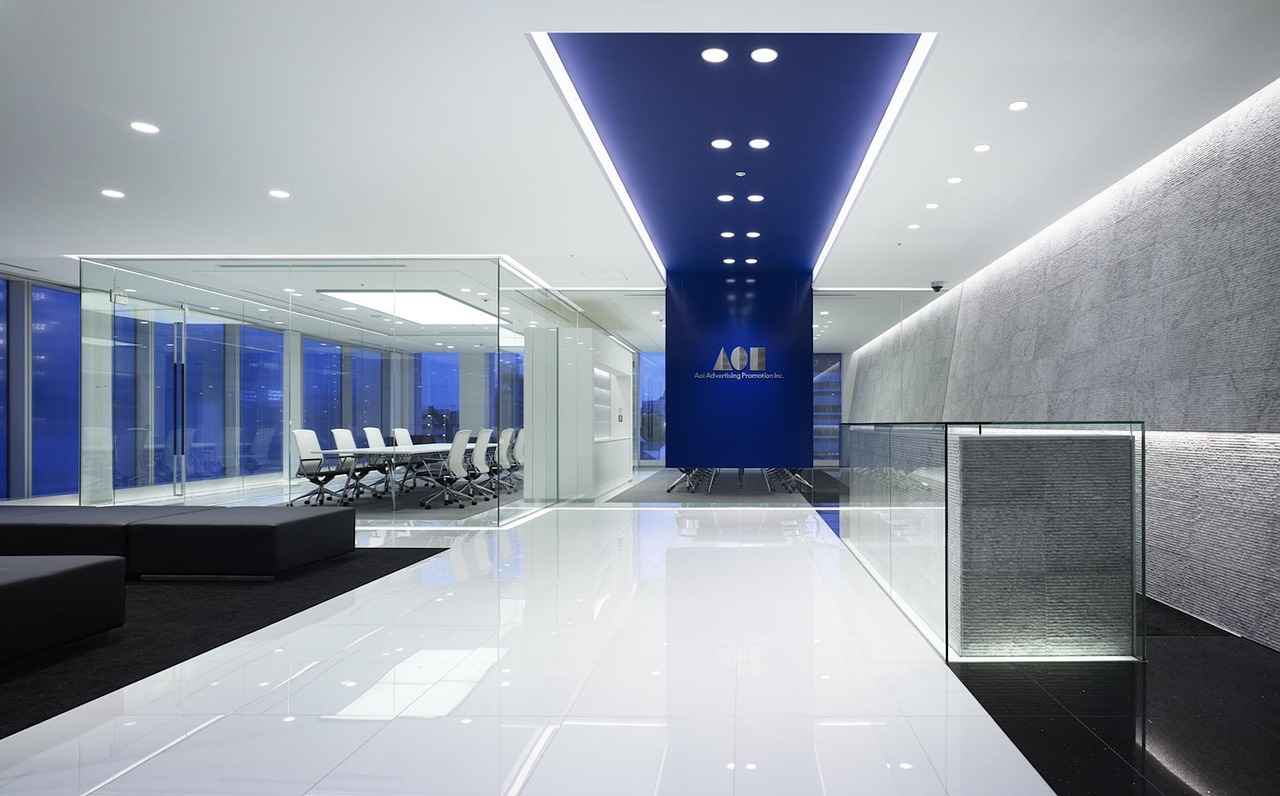
Step-by-Step Guide to Building Your Room Divider
Creating a room divider can transform your loft space, providing both functionality and style. This step-by-step guide will walk you through the entire DIY process, ensuring that you achieve a successful and satisfying project outcome. By following these detailed instructions, you’ll gain confidence in your ability to tackle this project and enhance your living space.
Before diving into the construction, it’s crucial to understand the essential steps involved in building your room divider. This guide covers everything from planning to the finishing touches.
To begin, you need to carefully plan your design. Consider the following:
- Dimensions: Measure the space where the divider will be placed to ensure it fits perfectly.
- Style: Decide on the industrial style you want to achieve, whether it’s rustic, modern, or a mix of both.
- Functionality: Think about how the divider will be used. Will it offer privacy, serve as a backdrop for decor, or both?
Next, compile a list of necessary tools and materials. Here’s what you’ll typically need:
Tools:- Saw (circular or hand saw)- Drill- Screwdriver- Measuring tape- LevelMaterials:- Wooden boards (for the frame)- Metal brackets (for added support)- Glass panels (optional)- Paint or stain (for finishing)
Start by cutting your wooden boards to the desired lengths for the frame. Assemble the frame using metal brackets for stability. Ensure that the structure is level and square to avoid any issues later on.
Once the frame is complete, it’s time to install the panels. If you’re using glass, be sure to handle it with care. Secure each panel in place using appropriate fasteners, ensuring they are firmly attached to the frame.
With the structure complete, it’s time to add the finishing touches:
- Painting or Staining: Choose a color or stain that enhances the industrial aesthetic. Apply multiple coats for a rich finish.
- Decorative Elements: Consider adding shelves or hooks to increase functionality and personalize your divider.
After completing your room divider, conduct a thorough inspection. Check for stability and ensure that all elements are securely fastened. Make any necessary adjustments to perfect the look.
By following this step-by-step guide, you will not only create a functional room divider but also a stylish addition to your loft space. Embrace your creativity, and enjoy the process of enhancing your home!
Planning Your Design
When embarking on the journey of creating a DIY industrial-style room divider, is a critical first step. This phase not only sets the foundation for your project but also ensures that the final product aligns with your vision and functional needs. A well-thought-out design can transform your space, making it both aesthetically pleasing and practical.
Careful planning allows you to consider various factors that will influence the outcome of your room divider. Here are some key points to keep in mind:
- Functionality: Determine how you intend to use the divider. Will it serve as a privacy screen, a decorative element, or both?
- Space Measurement: Accurately measure the area where the divider will be placed. This ensures that your design fits seamlessly into your loft without overwhelming the space.
- Material Selection: Consider what materials will best suit your design. Industrial-style dividers often feature a mix of wood, metal, and glass, each contributing to the overall aesthetic.
- Style Cohesion: Your divider should complement the existing décor of your loft. Think about color schemes, textures, and overall themes that will harmonize with your current interior.
Incorporating various design elements can elevate your room divider from functional to striking. Here are some aspects to explore:
- Height and Width: Decide on the dimensions of your divider. A taller divider can create a stronger sense of separation, while a lower one can maintain an open feel.
- Patterns and Shapes: Experiment with different shapes—consider geometric patterns or asymmetrical designs that can add visual interest.
- Decorative Features: Think about adding shelves or hooks to your divider. These features can enhance functionality while providing additional storage or display options.
Before you start building, it’s helpful to visualize your design. Here are some effective methods:
- Sketching: Create rough sketches of your ideas. This can help clarify your vision and guide your construction process.
- Digital Design Tools: Utilize design software or apps that allow you to create a 3D model of your room divider. This can provide a clearer picture of how it will look in your space.
- Inspiration Boards: Compile images from magazines, websites, or social media platforms that resonate with your design style. This can serve as a motivational guide throughout your project.
As you finalize your design, take a moment to reflect on your plan:
- Budget: Establish a budget for your project that includes all materials and tools needed. This will help you avoid unexpected expenses.
- Timeline: Set a realistic timeline for completing your project. Factor in the time needed for planning, gathering materials, and construction.
- Safety: Always prioritize safety by using appropriate tools and protective gear during the building process.
By investing time in the planning phase, you can ensure that your DIY industrial-style room divider will not only meet your functional requirements but also enhance the overall aesthetic of your loft space. Remember, a well-planned design is the key to a successful and satisfying DIY project!
Gathering Tools and Materials
When embarking on a DIY project, particularly one as intricate as constructing an industrial-style room divider, gathering the right tools and materials is essential. This preparatory step not only enhances efficiency but also minimizes potential disruptions during the construction phase. By having everything ready before you start, you can maintain a steady workflow and focus on the creative aspects of your project.
Starting your DIY journey with a comprehensive list of tools and materials can make a significant difference. It allows you to avoid unnecessary interruptions that can derail your progress. Imagine getting halfway through your project only to realize you’re missing a crucial component; this can be frustrating and time-consuming. By preparing in advance, you ensure that you have everything at hand, enabling a smoother and more enjoyable building experience.
- Measuring Tape: Accurate measurements are critical for ensuring your divider fits perfectly in your space.
- Power Drill: This tool is essential for assembling parts, especially if you’re working with wood and metal.
- Saw: Depending on your material choice, a circular saw or jigsaw will be necessary for cutting wood or metal pieces to size.
- Screwdriver Set: A variety of screwdrivers will help you secure your materials together effectively.
- Level: To ensure your divider stands straight and looks professional, a level is indispensable.
- Sandpaper: For smoothing edges and surfaces, especially if you’re using wood.
Choosing the right materials is equally important for both the aesthetic and structural integrity of your room divider. Here’s a list of materials you might consider:
- Wood: Select sturdy hardwood or plywood for the frame of your divider.
- Metal: Use metal brackets or pipes for added strength and an industrial feel.
- Glass Panels: If you want to incorporate transparency, glass can add a modern touch.
- Paint or Stain: Choose colors that complement your loft’s interior style while ensuring durability.
- Hardware: Don’t forget screws, nails, and any other necessary fasteners.
Once you have identified the tools and materials needed, create a detailed shopping list. This list should include specific quantities and dimensions to avoid multiple trips to the hardware store. Consider visiting local suppliers or checking online for the best prices and availability.
Before diving into the construction phase, take the time to organize your workspace. A clean and organized area will not only boost your efficiency but also enhance safety. Lay out all your tools and materials in a logical order, so you can easily access them as you work.
By taking the time to gather your tools and materials upfront, you will set the stage for a successful DIY project. This preparation allows you to focus on the creative aspects of building your industrial-style room divider, ensuring that your final product is not only functional but also a stunning addition to your loft space.
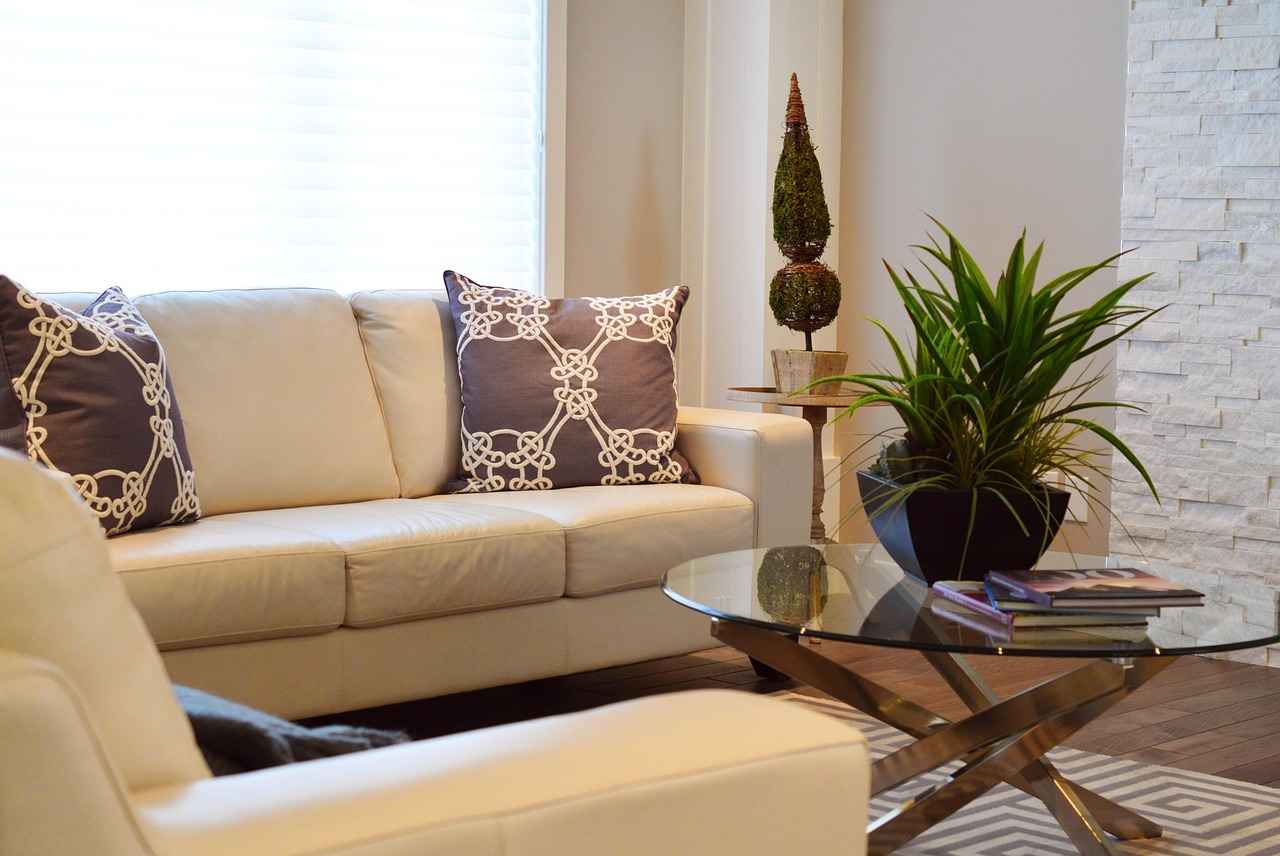
Finishing Touches for Your Divider
When it comes to designing your loft space, the details matter immensely. Finishing touches can transform a basic room divider into a stunning centerpiece that enhances the overall aesthetic of your home. It’s not just about functionality; it’s about creating a cohesive look that ties your entire space together.
Finishing touches serve several purposes in interior design. They not only add visual interest but also help to define the character of your space. A well-executed room divider can become a conversation starter, reflecting your personal style and enhancing the overall ambiance of your loft.
- Choose the Right Color Palette: The colors you select for your room divider should complement the existing decor of your loft. Consider shades that resonate with the industrial style, such as muted tones or metallic finishes.
- Add Texture: Incorporating different materials can create depth. For example, combining wood with metal or glass can enhance the visual complexity of your divider.
- Incorporate Lighting: Installing LED strips or spotlights can highlight your divider, making it a focal point in the room. Lighting can also create a warm and inviting atmosphere.
To further personalize your room divider, consider adding decorative elements that reflect your personality:
- Shelves: Adding shelves can provide functional storage while displaying decorative items or plants.
- Hooks: Incorporate hooks for hanging items like hats or bags, blending practicality with style.
- Greenery: Adding plants can bring a touch of nature indoors, softening the industrial look and improving air quality.
The finish you choose can dramatically alter the appearance of your divider. Here are some options:
- Matte Finishes: A matte finish can provide a contemporary look, perfect for a minimalist style.
- Glossy Finishes: If you want to make a statement, consider a glossy finish that reflects light and adds a modern touch.
- Stains: Using wood stains can enhance the natural grain of the wood while adding warmth to your space.
To achieve a cohesive design, consider the following:
- Consistency: Ensure that the materials and colors used in your room divider align with other elements in your loft.
- Balance: Strive for a balance between the divider and the surrounding furniture and decor. This can be achieved by mirroring colors or materials.
- Style Harmony: Your room divider should resonate with the overall style of your loft, whether it’s industrial, modern, or eclectic.
In conclusion, adding thoughtful finishing touches to your room divider can significantly enhance its impact in your loft space. By carefully selecting colors, textures, and decorative elements, you can create a divider that is not only functional but also a stunning addition to your home. Remember, the key to a successful design lies in the details.
Painting and Staining Options
When it comes to enhancing the aesthetic of your industrial-style room divider, choosing the right paint or stain is essential. Not only does it contribute to the overall look, but it also plays a crucial role in protecting the materials used. Below, we explore various options and tips to help you select the best finish for your DIY project.
Applying paint or stain to your room divider can significantly influence its durability and appearance. A well-chosen finish can highlight the natural beauty of wood or metal, while also providing a protective layer against wear and tear. This is particularly important in high-traffic areas or spaces exposed to moisture.
- Oil-Based Paints: These are known for their durability and glossy finish, making them ideal for high-use surfaces. They resist fading and are less prone to chipping.
- Water-Based Paints: Easier to clean up and quicker to dry, water-based paints are a great choice for indoor projects. They also emit fewer fumes, making them a healthier option.
- Wood Stains: Stains can enhance the grain of the wood, adding depth and character. They come in various shades, allowing you to tailor the look to your specific style.
- Metallic Finishes: For a modern twist, consider using metallic paints or finishes. These can give your divider a striking, contemporary look that stands out.
When selecting colors, consider the overall theme of your loft space. Neutral tones such as grays, blacks, and whites can create a sophisticated backdrop, while bold colors can serve as a statement piece. Additionally, you might want to experiment with textures, such as matte versus glossy finishes, to achieve the desired effect.
Before applying any paint or stain, proper preparation of the surface is vital. Ensure that the materials are clean, dry, and free from any previous finishes. Sanding the surface can help the new coating adhere better, providing a smoother finish.
Using the right application technique can make a significant difference in the final appearance of your room divider. Here are some methods to consider:
- Brush Application: Ideal for detailed work, brushes allow for precision, particularly in corners and edges.
- Roller Application: Rollers are great for covering larger areas quickly and evenly, especially with paint.
- Spray Application: For a flawless finish, spray painting can be effective, but it requires proper ventilation and protective gear.
After painting or staining, it’s essential to protect your work with a clear topcoat. This not only enhances the finish but also adds an extra layer of protection against scratches and stains. Options include:
- Polyurethane: Available in both oil-based and water-based formulas, polyurethane is excellent for durability.
- Varnish: This provides a hard, protective finish and is ideal for outdoor applications.
In summary, the right paint or stain can significantly enhance the industrial aesthetic of your room divider while safeguarding the materials. By considering your options carefully and following proper application techniques, you can achieve a stunning and functional addition to your loft space.
Incorporating Decorative Elements
When designing your DIY industrial-style room divider, incorporating decorative elements can significantly enhance its functionality and aesthetic appeal. By adding shelves, hooks, or plants, you can create a piece that not only serves its purpose but also becomes a stylish décor element in your space.
Decorative elements can transform a simple room divider into a personalized statement piece. Here are some reasons to consider:
- Functionality: Shelves provide a practical space for displaying books, photos, or decorative items, while hooks can hold bags, hats, or coats.
- Personalization: Adding your favorite plants or knick-knacks reflects your personality and style, making the divider uniquely yours.
- Visual Appeal: Decorative elements can break up the monotony of a large open space, adding interest and depth to your loft.
When selecting decorative elements for your room divider, consider the following:
- Style Consistency: Ensure that the shelves, hooks, and plants align with the overall industrial aesthetic of your room divider. For instance, opt for metal shelves with a rustic finish to maintain a cohesive look.
- Size and Scale: Choose elements that complement the size of your divider. Oversized plants or bulky shelves may overwhelm the space, while too-small items can get lost.
- Functionality First: Prioritize functional elements that enhance usability without compromising style. A well-placed shelf can serve as both a display area and a practical storage solution.
Here are some creative ways to incorporate decorative elements into your room divider:
- Floating Shelves: Install floating shelves at varying heights to create visual interest. Use these shelves to display books, art, or small plants, adding a personal touch.
- Hooks and Racks: Integrate industrial-style hooks or racks on one side of the divider. This can serve as a chic way to hang items, keeping your space organized and stylish.
- Vertical Gardens: Create a vertical garden by attaching planters to your divider. This not only adds greenery but also purifies the air and enhances the overall ambiance.
- Lighting Features: Consider adding built-in lighting to highlight your decorative elements. A well-placed light can draw attention to your favorite pieces and create a warm atmosphere.
To keep your room divider looking its best, regular maintenance is essential:
- Dusting: Regularly dust shelves and decorative items to prevent buildup and maintain their appearance.
- Watering Plants: Ensure that any plants you incorporate are well-cared for. Choose low-maintenance plants if you have a busy lifestyle.
- Rearranging: Don’t hesitate to change the arrangement of your decorative elements. A simple rearrangement can breathe new life into your space.
By thoughtfully incorporating these decorative elements, your industrial-style room divider can become a focal point that enhances both the functionality and style of your loft space. Embrace creativity and let your personality shine through!
Frequently Asked Questions
- What materials are best for an industrial-style room divider?
For an authentic industrial look, consider using a combination of wood and metal. These materials not only provide durability but also create a striking visual contrast that embodies the essence of industrial design.
- Can I use glass panels in my room divider?
Absolutely! Incorporating glass panels can add an airy feel to your room divider, allowing natural light to flow while still maintaining separation between spaces. It’s a great way to keep your loft feeling open and spacious.
- How do I ensure my DIY room divider is functional?
Start by carefully planning your design to meet both aesthetic and functional requirements. Make sure to consider the dimensions of your space and how you intend to use the divider, whether for privacy, storage, or simply as a decorative element.
- What finishing touches can I add to my room divider?
Finishing touches like painting or staining can enhance the overall look of your divider. Additionally, consider incorporating decorative elements such as shelves, hooks, or even plants to personalize and elevate its functionality.

